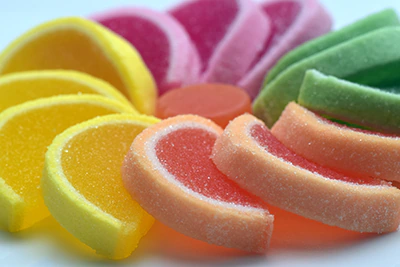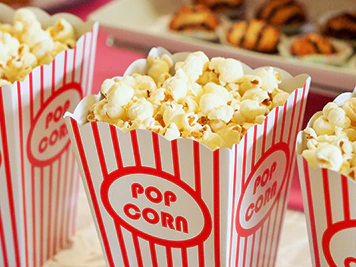| Additive Summary | Tartrazine (E102) |
|---|---|
| Essence | Tartrazine or (E102) is a synthetic azo dye (artificial color) used to achieve the lemon-like yellow coloring in the food and other products to make it all more visually appealing cheaply. |
| Names | Tartrazine, E102, Yellow 5 Lake, C.I. 19140, FD&C Yellow 5, Food Yellow 4, Acid Yellow 23, trisodium 1-(4-sulfonatophenyl)-4-(4-sulfonatophenylazo)-5-pyrazolone-3-carboxylate. |
| Sourcing | It’s fully synthetically made. It’s typically prepared from 4-amino benzenesulphonic acid. |
| Manufacturing | To produce Tartrazine, the 4-amino benzenesulphonic acid is converted into a diazo compound with the help of hydrochloric acid and sodium nitrite. Then, that compound is paired up with the ethyl ester, methyl ester, or a salt of the carboxylic acid. Alternatively, the pairing can also be done with 4,5-dihydro-5-oxo-1-(4′-sulphophenyl)-1Hpyrazole-3-carboxylic acid. The outcome is then both purified and isolated as the sodium salt. |
| Application | Coloring (mainly used for yellow, very water-soluble, but can also be used for blue and green). |
| Acceptable Daily Intake | It is said to be safe in amounts up to 7.5 milligrams on every kilogram of body weight. But that’s a number void of reality. Realistically, we shouldn’t ever consume it. Depending on the food, it’s used in amounts as high as 500 milligrams per kilogram of food. |
| Side Effects | Known to cause hyperactivity (ADHD) in children, obsessive-compulsive disorder, asthma, cancer, damage the brain (neurotoxin), and seems to be pretty bad when it comes to genotoxicity, cytotoxicity, and mutagenicity just in general. It can also cause blurred vision, anxiety, general weakness, migraines, purple skin patches, clinical depression, itching, heat waves, sleep disturbance, feeling of suffocation, and others. Other than that, its petroleum contents are definitely not good for health. |
| Benefits | None. |
| Studies | 750+ studies on Pubmed. 45+ studies on safety. |
| Allergens | None. |
| Diet Restrictions | None. |
| Assessment (As An Additive) |
Seriously harmful. | Category 5 Additive. We can get the same outcome color-wise with Beta-Carotene but without any of the health risks. Tartrazine (E102) is used instead because it’s very cheap. |
| Products | Used in supplements like One-A-Day Women’s 50+ Complete Multivitamin, One-A-Day For Him VitaCraves Teen Multi, Mason Natural, Women’s Daily Multi Formula, and others. Never used as the beneficial (active) ingredient. Can’t be found naturally in foods. Used in processed foods like marmalade, jelly, mustard, pickles, popcorn, chewing gum, ice cream, energy drinks, corn chips, horseradish, hard candy, puddings, cake mixes, alcoholic beverages, wines, ice pops, cereal, green-colored seaweed salad, potato chips, marzipan, biscuits, pastries, cookies, noodles, cotton candy, soft drinks, drink mixes, fruit cordials, and others. |




I have discovered my blood pressure tablets contain Tartrazine E105. Not even sure why it’s in it!
Hey, Alice!
I absolutely agree. It like 99% of the cases doesn’t actually even need to be there. It doesn’t do anything good in terms of one’s health. I mean, It makes no sense to put it there. But it’s just marketing. And marketing (I think) generally says that visual appearance trumps potential negative effects that most people don’t know about.
Kind regards!
Matiss